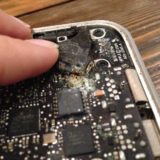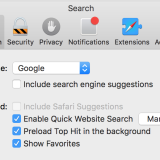How To Build YOUR Situation Room- How To Build A SICK Home Office- 2
 |
| The Whitehouse Situation Room- |
You’ve likely seen it on TV and in movies. The fortune 500 CEO, secret agent, or dirty politician in whatever show you’re watching is monitoring the news via a billion screens. In “The Social Network”, Mark Zuckerberg, and the rest of Facebook look on to a giant screen to see when their site hits 500 million users. Believe it or not, you can have one of your own in your home office with surprisingly little money and effort. In this installment of our series on building a great home office, we’ll talk about building one of these.
What you’ll need:
- Old laptop or desktop with HDMI, DVI, mini DVI, or mini display ports.
- The proper cables
- Old Flat Computer Screen
- keyboard
- mouse
- Power Strip
- (optional) Wireless mouse
Steps
- Buy, or find a flat computer display. Once quite expensive, now old displays are a dime a dozen. For example, the new 21 inch HP display below costs $200. Many used displays can be found for under $100. Definitely go big in terms of size and resolution, because it looks cooler and it’s more effective. You can click the display below, or check Ebay, best buy, etc. Note: Make sure that your display has the right kind of port for your computer (i.e DVI, HDMI).
- Find an old computer. Nearly anything that could run Windows XP or Leopard and above works. If you don’t have one, I’d recommend buying a used netbook. They’re dirt cheap for computers (some as cheap as $150), and as long as they have an HDMI or DVI port, they’ll work fine. Make sure you have the proper cable to connect to your screen. If not, you can get them online for around $10.
- Scout a place to put it. I put mine on a shelve about seven feet in front of my bed for a perfect view. Make sure there is room (height, width, length) and at least one power outlet. If you’re using a desktop, you’re going to need a little more room.
- Put your display in. If you can, disconnect the power cord beforehand and just tuck it away for later. It makes it less messy, and means you’re less likely to trip on it.
- Hook up the power strip to your power source and tuck it behind your display. The great thing about my shelf, is that the screen and shelf-wall hide all signs of machinery and wiring away.
- Hook up your computer, keyboard, and mouse. Using a modern OS, most computers will automatically detect the display once you connect to it. Be sure to tweak the settings to optimize your settings. Hook up the display and computer to the power strip to keep the wires hidden. It may be worth your while to splurge an extra $20 and get a wireless mouse.
- Make it your own. For some extra money you can buy rigs to hook the screen up to the wall. There are programs that can stream live news, or live stock tickers, or live web stats (that’s what I watch). Use it to monitor YOUR situations. Watch sports scores while you work on a word document on your main computer. I keep Google Analytics’s live beta up to watch my site. And be sure to bookmark this site, or sign up for our newsletter so you never miss our next issue of great home office tips.









